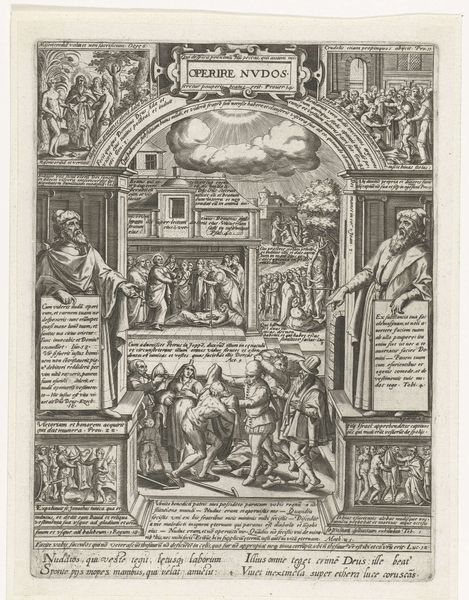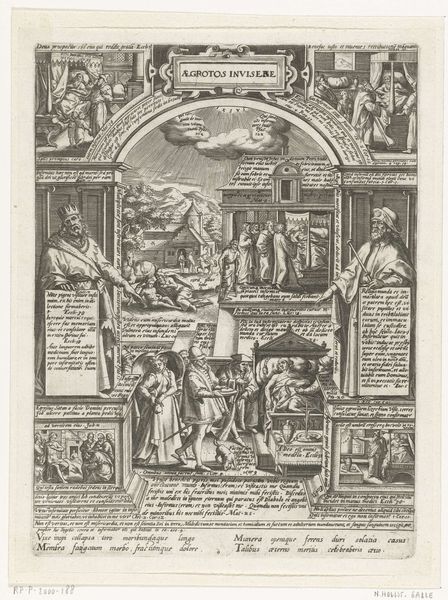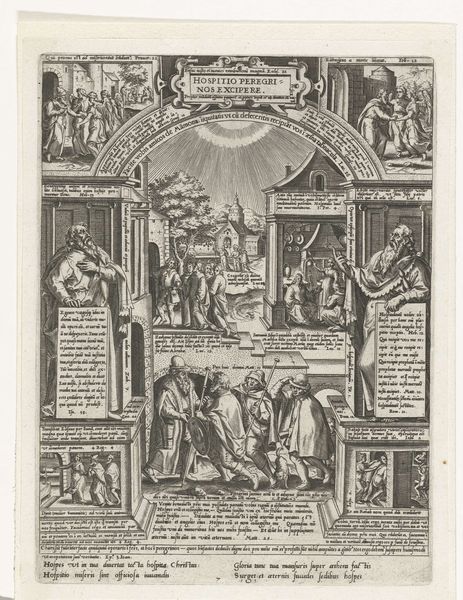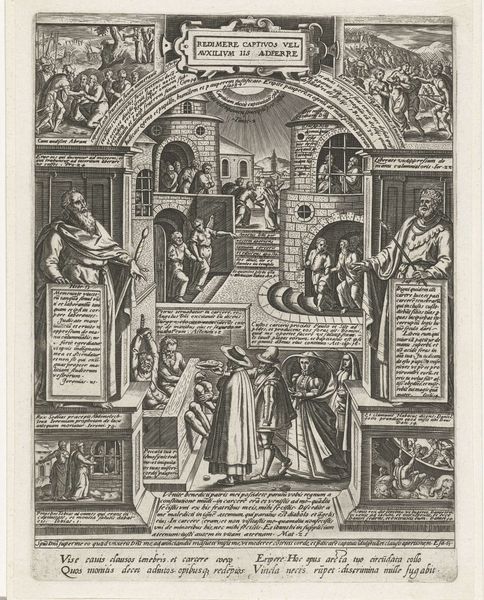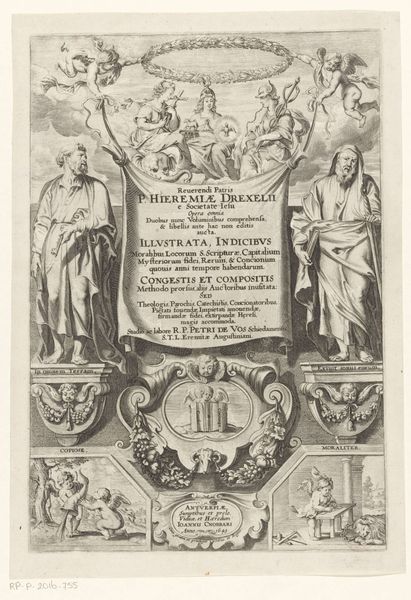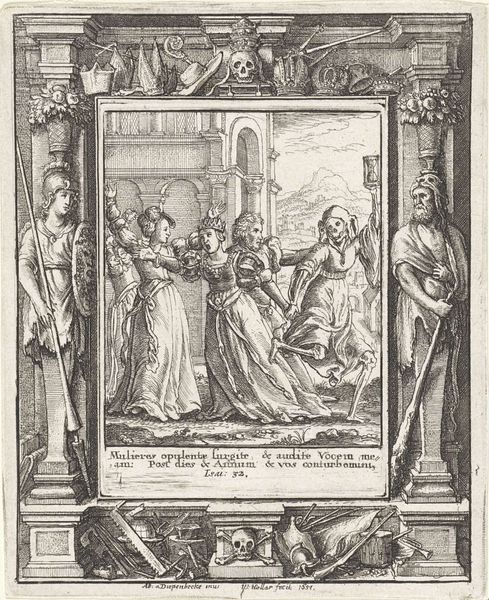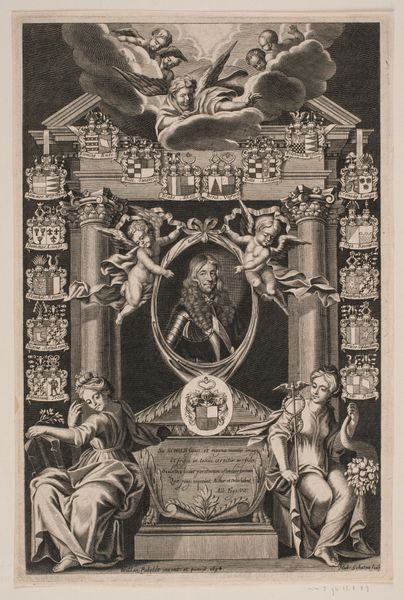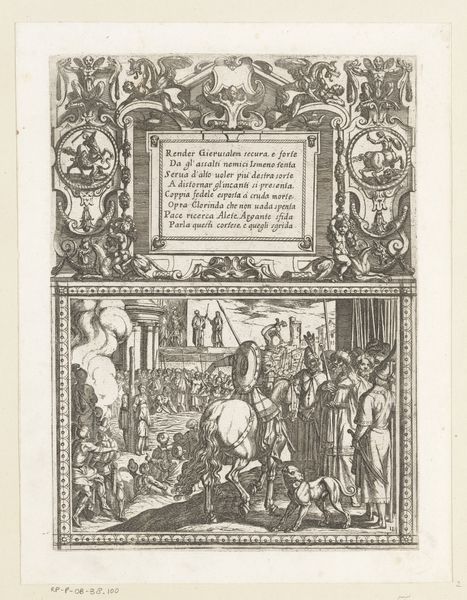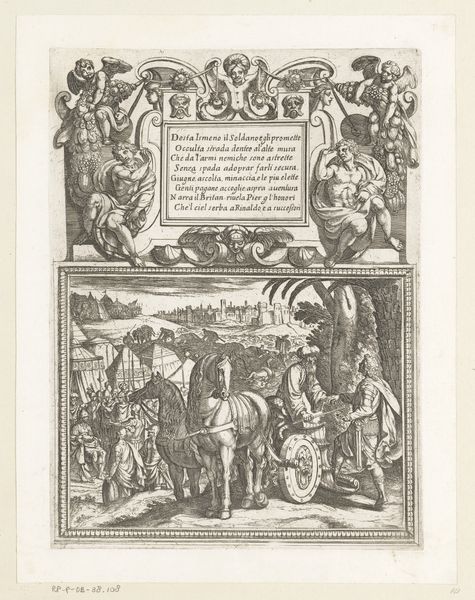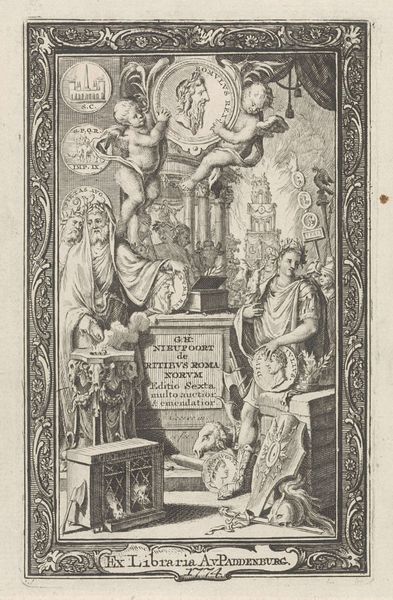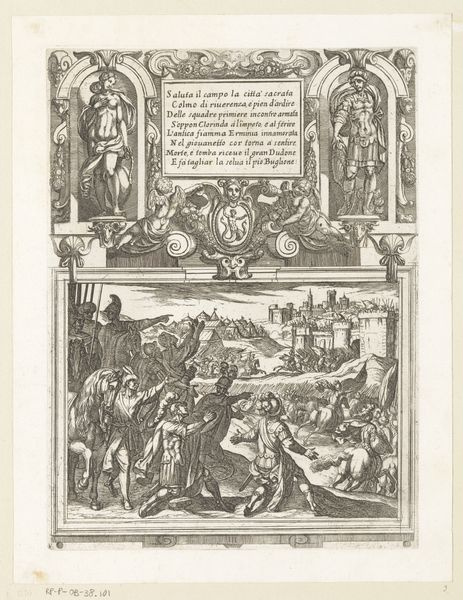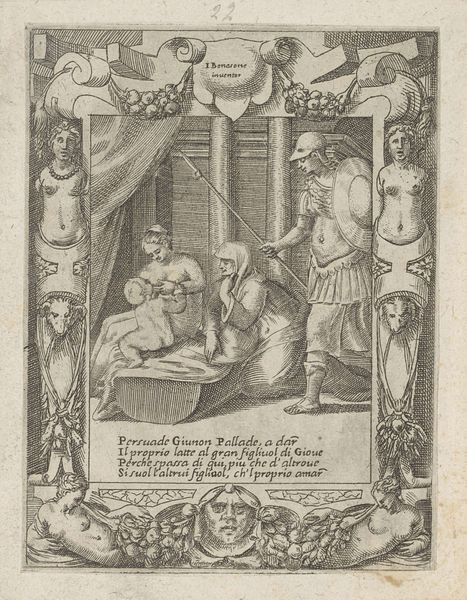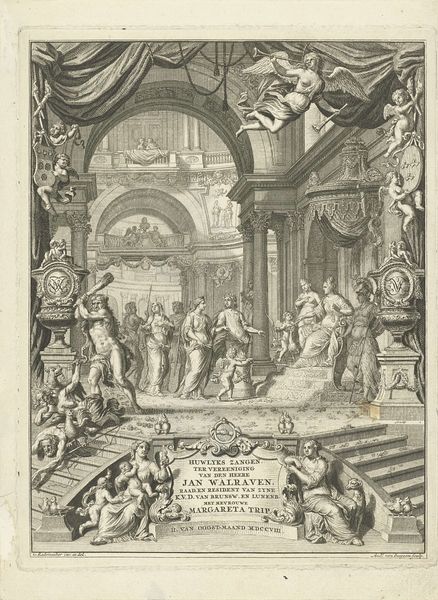
print, engraving
#
allegory
#
pen drawing
# print
#
landscape
#
figuration
#
line
#
history-painting
#
northern-renaissance
#
engraving
Dimensions: height 256 mm, width 192 mm
Copyright: Rijks Museum: Open Domain
Curator: The work before us is "Het laven van de dorstigen," or "Quench the Thirsty," an engraving by Philips Galle, dating back to 1577, and currently held at the Rijksmuseum. Editor: It's strikingly symmetrical. The balanced composition, despite the chaotic scenes within, creates an immediate sense of… order, perhaps? A rigid order. Curator: Galle meticulously layers different biblical scenes illustrating the act of providing water, both literally and metaphorically. You can see figures offering drinks, an indoor feast, and historical or religious allegories. Water, here, serves as a symbol of charity and spiritual nourishment. Editor: Yes, but it’s the compartmentalization I keep returning to. Each scene is neatly framed, like a series of discrete stages. Even the text is regimented. Does this structure emphasize the compartmentalized nature of good deeds itself? Are we meant to focus on each act in isolation, or see them as a whole? Curator: I see your point. The compartments remind me of a triptych format but collapsed onto a single plane. Each scene gains weight through historical and theological references – Exodus, the Gospels – and by placing the scenes near standing biblical characters, Galle is reinforcing Christian values of compassion. It also may suggest contemporary life juxtaposed with religious lore, which was very popular at that time. Editor: The landscape feels deliberately flattened. The Northern Renaissance style flattens out the imagery into almost two-dimensional cutouts which accentuates the feeling of flatness to drive its allegorical message forward. I also notice the central arch shape—the composition really guides the viewer's gaze toward the arch at the upper center to the radiant beams of heavenly light Curator: It is not an open expansive vista. It is there but limited; almost caged, not suggesting infinite open spaces. It directs my attention instead, toward what could be considered the main characters in the artwork and the messages from above. I feel, that the limited and specific style also gives some agency back to God since we do see glimpses of open land and landscape through the clouds. Editor: Looking at the overall effect, I think that Galle offers the viewer a systematic overview of charity and virtue. While the detail might appear overwhelming at first, it all serves a clear, didactic purpose through composition and technique. Curator: Indeed. Galle reminds us how potent symbolic imagery can be in anchoring belief. These scenes were very important visually because the imagery also gave social meaning to individual and community beliefs and ways of acting. They can, for centuries after they were first depicted.
Comments
No comments
Be the first to comment and join the conversation on the ultimate creative platform.
